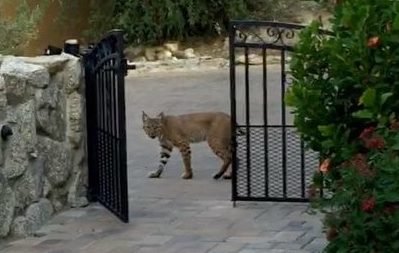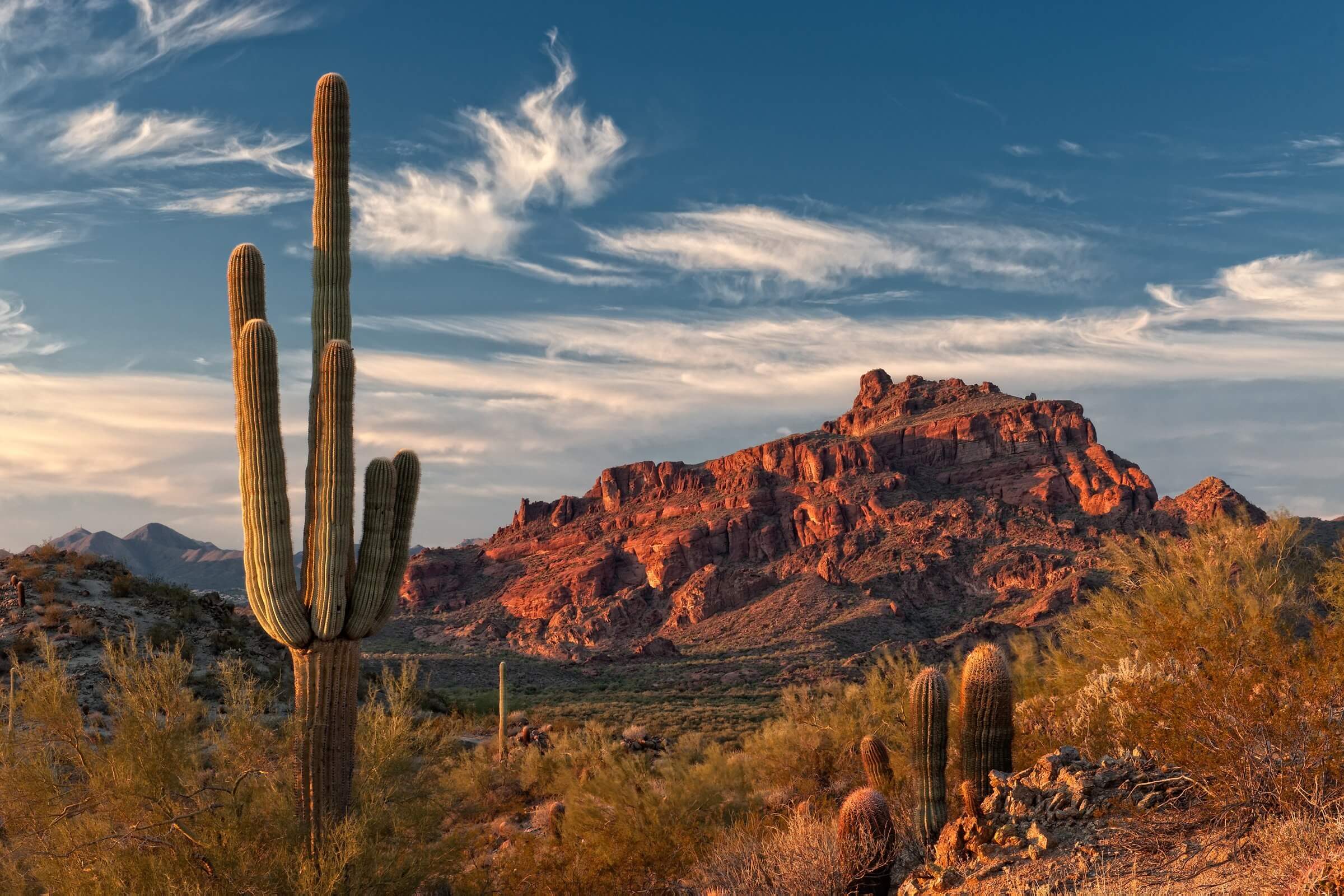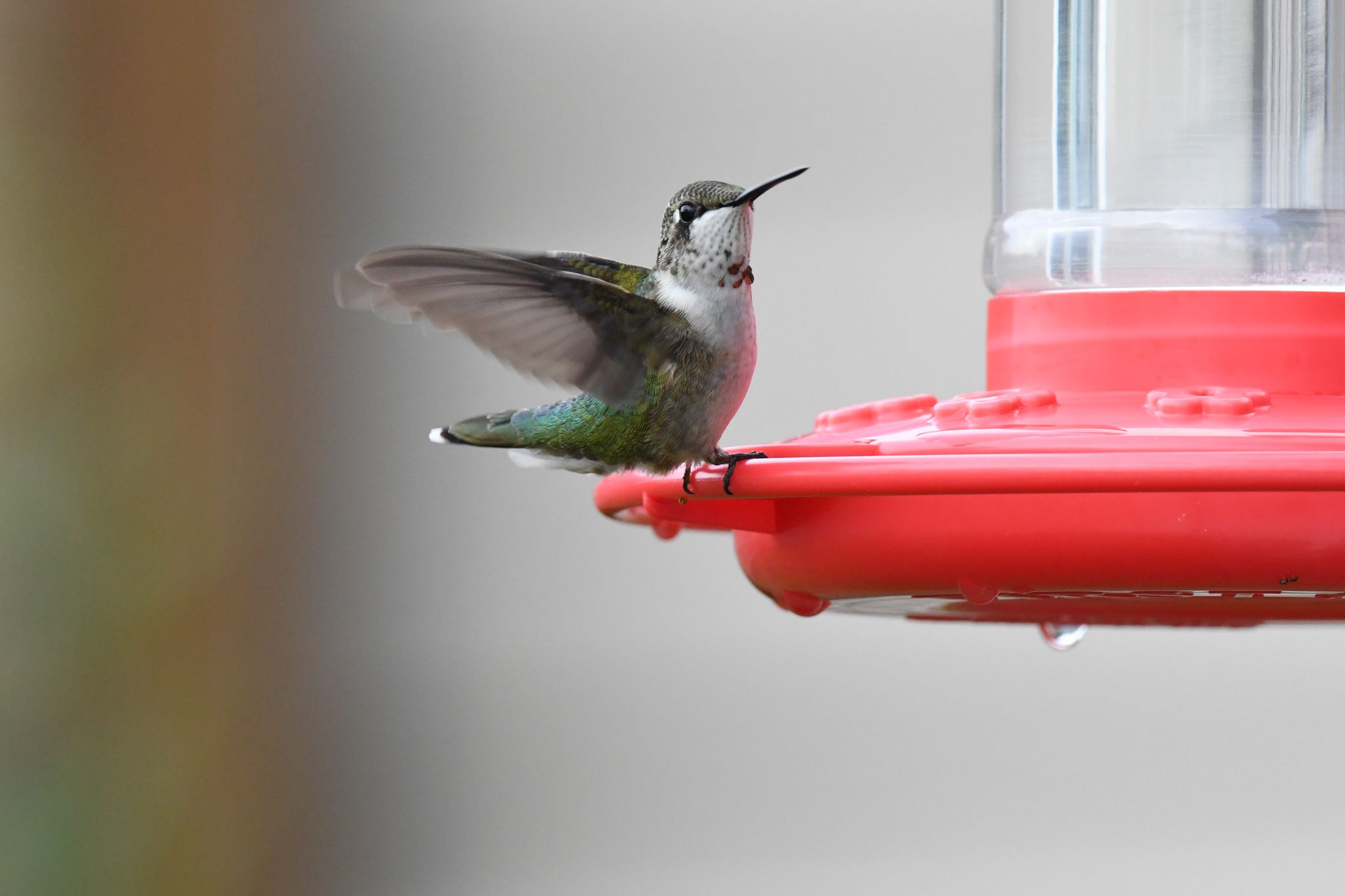Some of us spent our earliest years watching Saturday morning cartoons with their host of irresistible animated characters such as Bugs Bunny, Yogi Bear and Huckleberry Hound. One of my family’s favorites was Road Runner with the zany but somewhat lovable Wile E. Coyote and the marathon racing Road Runner. For those of you who missed these legendary characters, the weekly plot consisted of predictable chase antics in which the unwavering but often haggard and humiliated Wile E. set traps to catch the clever and elusive Road Runner. Despite falling off cliffs or exploding, Wile E. prevailed and returned every Saturday to try to snare the sprinting antagonist who resonated “beep beep” (which sounded more like “meep meep”).
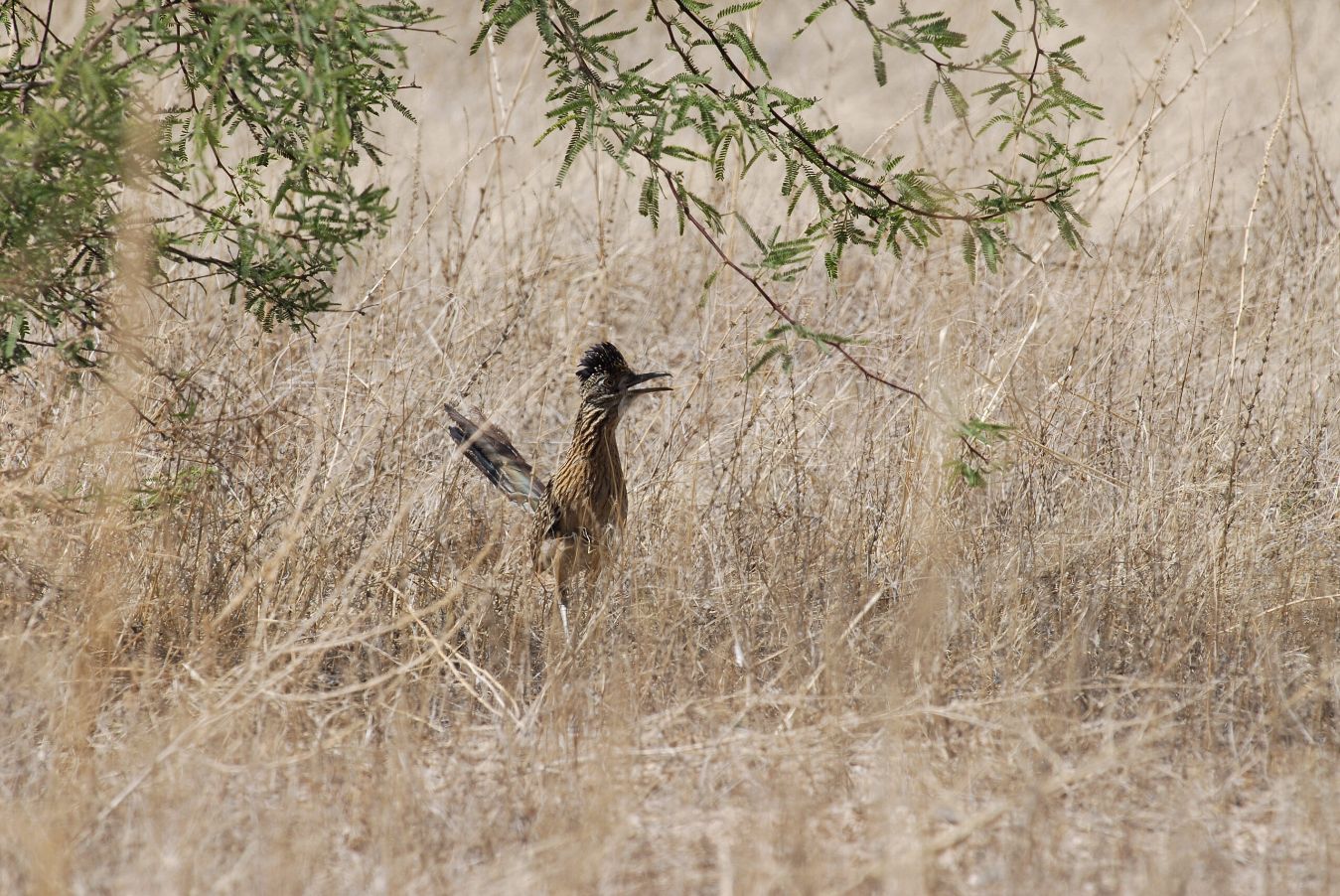
Greater Roadrunner in Arizona
The Theme
It may come as a surprise to a few visitors that the Looney Tunes-Warner Brothers’ creators of Road Runner chose real desert characters for their animated adventures. Coyotes and roadrunners are, in fact, masters of the desert with innate abilities to survive extreme conditions that include minimal access to water and widely divergent temperatures. Undeterred by compromised habitat and shifting climate, both critters have successfully adapted and currently remain prolific across the desert landscape.
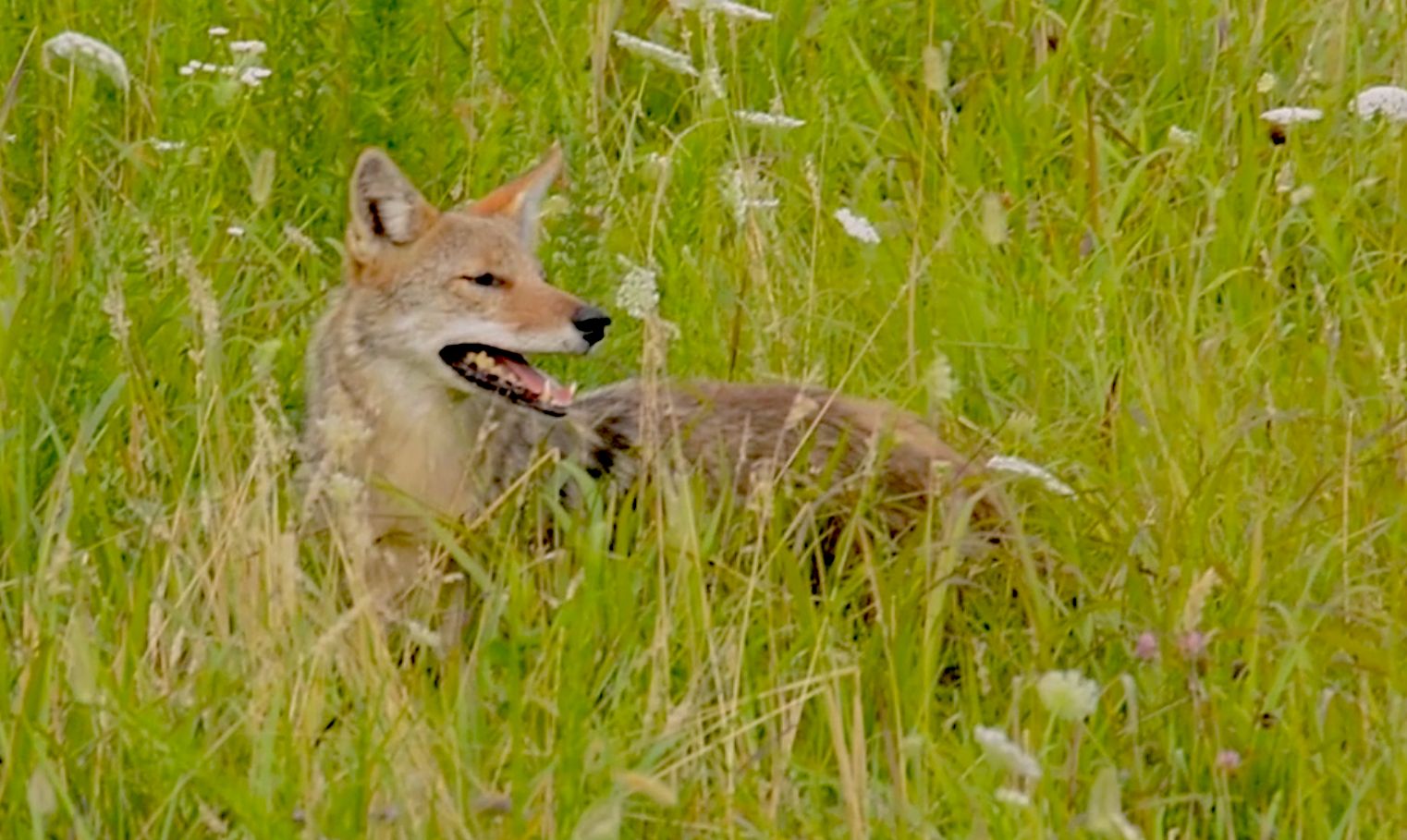
A coyote hunting insects in grasslands
The Setting
The Sonoran Desert in Arizona is home to both coyotes and the Greater Roadrunner. Hiking and biking trails are obvious vantage points if you’re interested in observing either or both. Because coyote populations are at an all-time high and they exist in cities, mountains and suburbs, your chances of spotting one (or being serenaded by their howls) are favorable in the greater Phoenix area. The more bashful roadrunner is sometimes a visitor to neighborhoods, parks and retirement communities where trees, shrubs or cactus provide a preferred perch and protection from predation. I have also seen roadrunners on the periphery of shopping malls and school campuses.
The Cast of Characters
Knowledge of coyote and roadrunner behaviors will increase your chances of recognizing them despite their distinctive disguises. Coyotes are members of the dog family, weigh between 15 and 30 pounds and are shades of tan or light grey. With bushy, black tipped tails, pointed ears and narrow, pointed faces, they can easily be mistaken for a small to medium-sized dog. Their acute sense of hearing and vision plus highly evolved sense of smell enhance their ability to locate and catch their preferred menu of frogs, insects, rabbits, snakes, fruit, fish, reptiles and occasionally a small deer. They hunt day and night, often choosing crepuscular light to surprise their prey. During the dry seasons they dig for water or resort to ponds, swimming pools and golf course water hazards to stay hydrated. Not to be outdone by the roadrunner, coyotes can run 40 mph and leap over 8-foot fences. They are popular in Native American folklore and unpopular with farmers. As a vacation renter, listen closely as dusk approaches… you can often hear them howling and yipping to communicate with other coyotes.
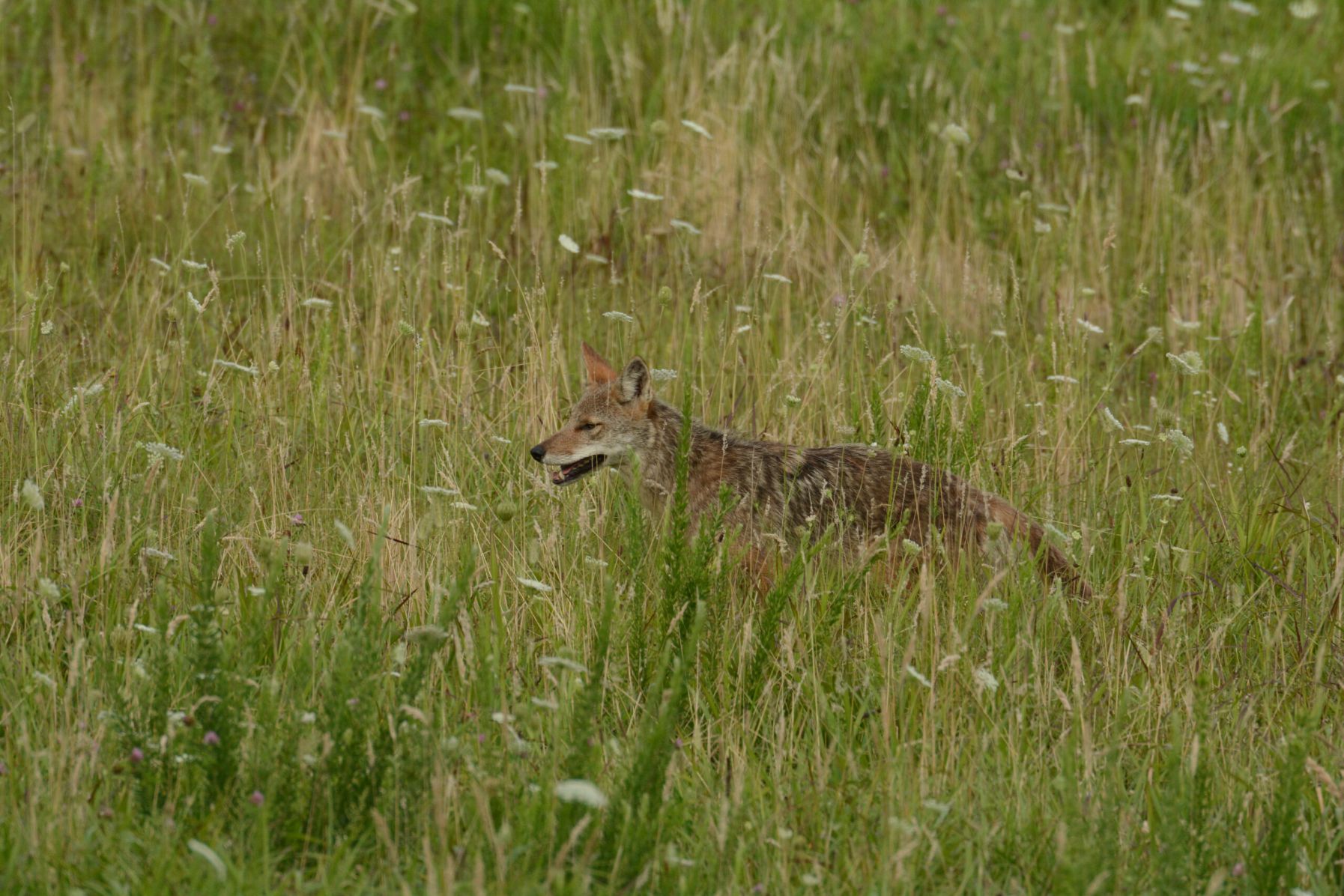
Coyote on the move at dusk
Roadrunners are terrestrial birds with limited flying skills but powerful legs and exceptional running ability. Members of the cuckoo family, they are about 2 feet long. They prefer to run but can reach roosting spots or escape predation by flapping their wings, fanning their tails and gliding. Rarely do they fly higher than 12 feet or farther than 25 – 30 yards. Roadrunners are carnivores who dine on some of my least favorite animals: rattlesnakes, scorpions, black widow spiders, crickets, cockroaches, snails and mice. Lacking the sharp beaks found on birds of prey, they are unable to tear their food apart so they eat the animals whole.
Roadrunners rely on moist food for hydration and also consume berries and seeds. Open grasslands and low deserts are places you are more likely to see roadrunners. Although they are not migratory birds, they are often absent or more difficult to find during the desert’s colder months when they are roosting in thicker vegetation and conserving energy. And real roadrunners do not say “beep beep” or “meep meep.” Instead, they make cooing, barking and rasping sounds to communicate with other roadrunners.
The Plot
Do coyotes pursue roadrunners? Although these birds are probably not preferred menu options, coyotes can outrun roadrunners which makes me wonder why the calculating Wile E. never caught Road Runner (Imagine the disappointed audiences!). Of course, the born to run roadrunner can always flap to a perch or into dense brush to escape enemies such as the coyote. Much of my research on this matter indicates coyotes largely prey on roadrunners’ nests and the adult roadrunners, unable to defend, flee to safety.

Greater Roadrunner in Mesa, AZ
The Conclusion
Should you approach coyotes or roadrunners? I recommend a respectful distance with all wildlife. Unlike cartoon and other television characters I loved as a child, wild animals are exactly that and may be unpredictable in their response to human encounters. Although coyotes are wary of people, they will sometimes linger in the area if your presence is not intimidating. Should you have the good fortune of spotting a Greater Roadrunner I recommend you stay as quiet and still as possible. They can outrun humans and, like the cartoon roadrunner, will use speed to quickly put significant distance between you and them.
Longing to see roadrunners and coyotes? Arizona Vacation Home Rentals has many homes where your chances of viewing one of these fascinating creatures are good. Choosing homes bordered with green spaces or near parks and trails increases your odds. Don’t forget your binoculars and cameras!
Save money and support local business by booking directly through
Arizona Vacation Home Rentals
Phone/Text: 480.626.4072
Photo credits: © Gilbert S Grant



